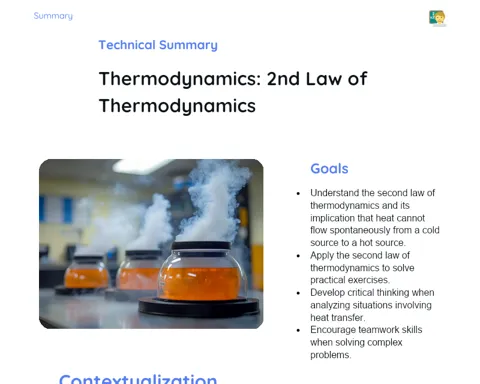Exploring Order of Magnitude: Estimates and Practical Applications
Objectives
1. Understand the concept of order of magnitude and its importance in scientific and everyday contexts.
2. Develop the ability to estimate the order of magnitude of different physical quantities.
3. Apply the concept of order of magnitude in practical situations, such as estimating the number of steps taken in a marathon.
Contextualization
The order of magnitude is an essential tool in Physics and various scientific and technological fields. It allows for the simplification of calculations and a quick understanding of how large or small a particular quantity is. For example, by estimating the number of stars in a galaxy or the number of cells in a human body, the order of magnitude gives us an approximate idea without the need for exact counts. Engineers, scientists, and IT professionals often use orders of magnitude to make quick estimates and informed decisions.
Relevance of the Theme
Understanding order of magnitude is crucial in today's world as it enables quick and accurate estimates, facilitating decision-making in various professional areas such as engineering, medicine, information technology, and finance. This skill is fundamental for facing job market challenges and solving practical everyday problems.
Concept of Order of Magnitude
The order of magnitude of a number is the nearest power of 10 to that number. For example, the order of magnitude of 4500 is 10^3, since 4500 is closer to 1000 (10^3) than to 10000 (10^4). This concept simplifies the comparison of very large or very small quantities, making data interpretation easier.
-
Simplification of Calculations: The order of magnitude allows for comparison of numbers without the need for exact precision.
-
Power of 10: It is based on powers of 10, which makes understanding scales easier.
-
Application in Various Fields: Used in sciences, engineering, information technology, among others.
Estimation of Order of Magnitude
Estimating the order of magnitude involves approximating a quantity to the nearest power of 10. This process is useful when a quick and general idea about the size of a quantity is needed without performing detailed calculations. For example, when estimating the population of a city, we can round the total number to the nearest order of magnitude.
-
Ease of Calculation: Allows for quick and simple calculations.
-
Approximation: Focuses on approximation to the nearest power of 10.
-
Use in Quick Decisions: Essential for situations that require quick and informed decisions.
Practical Applications of Order of Magnitude
The practical applications of order of magnitude are vast and varied, ranging from estimating resources in engineering projects to analyzing data in information technology. For example, engineers may use orders of magnitude to estimate the amount of materials needed for construction, while computer scientists may estimate the storage capacity required for large volumes of data.
-
Engineering: Estimation of materials and resources.
-
Information Technology: Storage and data processing capacity.
-
Quick Calculations: Facilitates quick calculations in various situations.
Practical Applications
- Civil Engineering: Estimates of materials needed for construction.
- Medicine: Estimates of the number of cells in an organism for biological studies.
- Information Technology: Estimates of storage and processing capacity in servers.
Key Terms
-
Order of Magnitude: Nearest power of 10 to a number.
-
Estimation: Process of approximating a quantity.
-
Power of 10: Exponential representation of a number in base 10.
Questions
-
How can the ability to estimate orders of magnitude be useful in your future career?
-
What challenges have you encountered when making order of magnitude estimates? How did you overcome these challenges?
-
Think of a everyday situation where order of magnitude could be used to facilitate a quick and accurate decision.
Conclusion
To Reflect
Understanding order of magnitude is an essential skill that transcends the classroom and applies to various professional areas and everyday situations. By estimating orders of magnitude, we develop the ability to make quick and accurate judgments, facilitating informed decision-making. This skill is particularly valuable in fields such as engineering, medicine, and information technology, where precision and speed are crucial. By mastering the concept of order of magnitude, you will be better prepared to face real-world challenges, applying Physics in a practical and effective way.
Mini Challenge - Population Estimation
Challenge to estimate the order of magnitude of the population of different countries.
- Choose three countries from different continents.
- Research the approximate population of each chosen country.
- Calculate the order of magnitude of the population of each country.
- Compare your estimates with the actual data and discuss the differences.
- Share your findings with your classmates.



